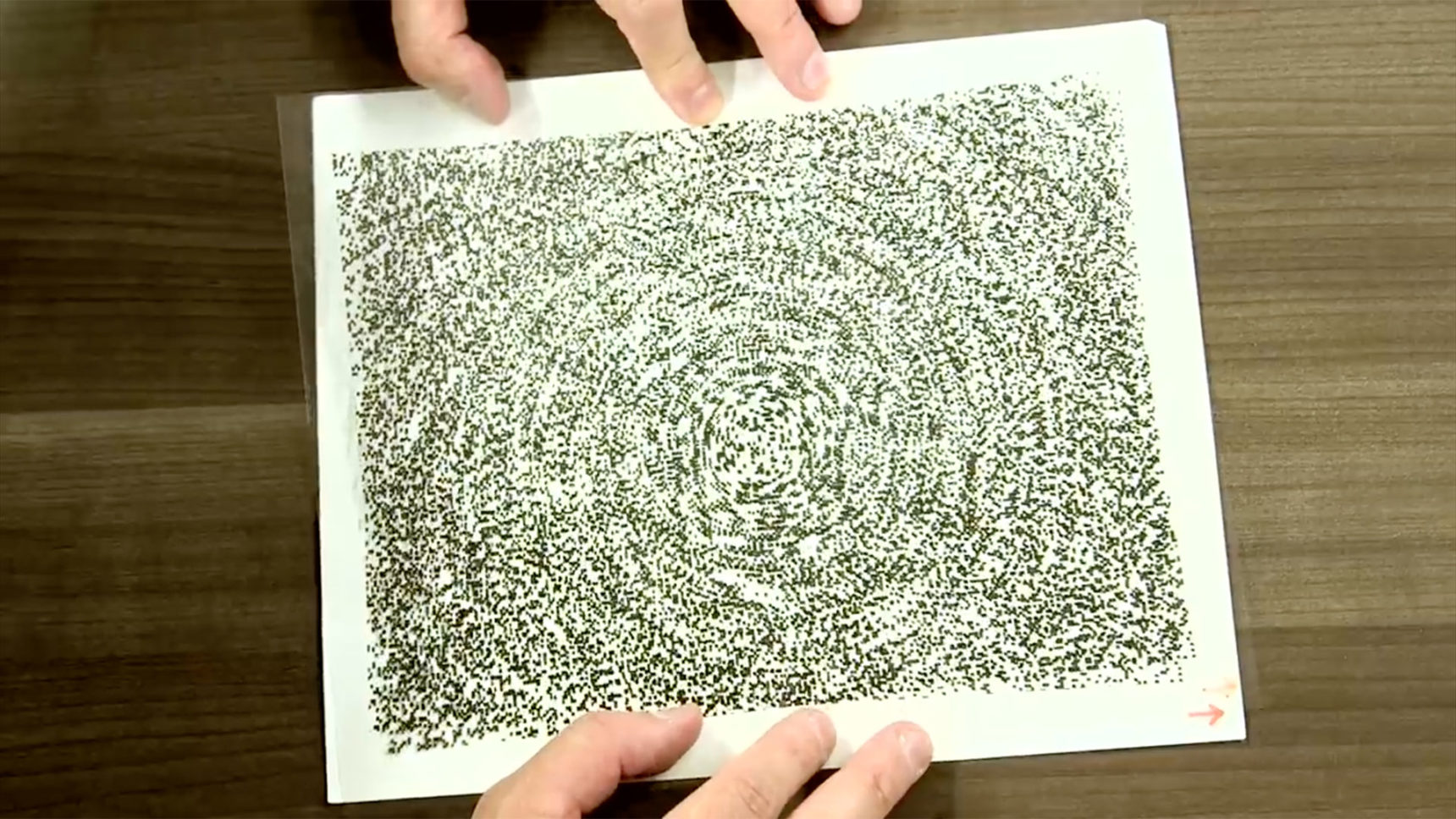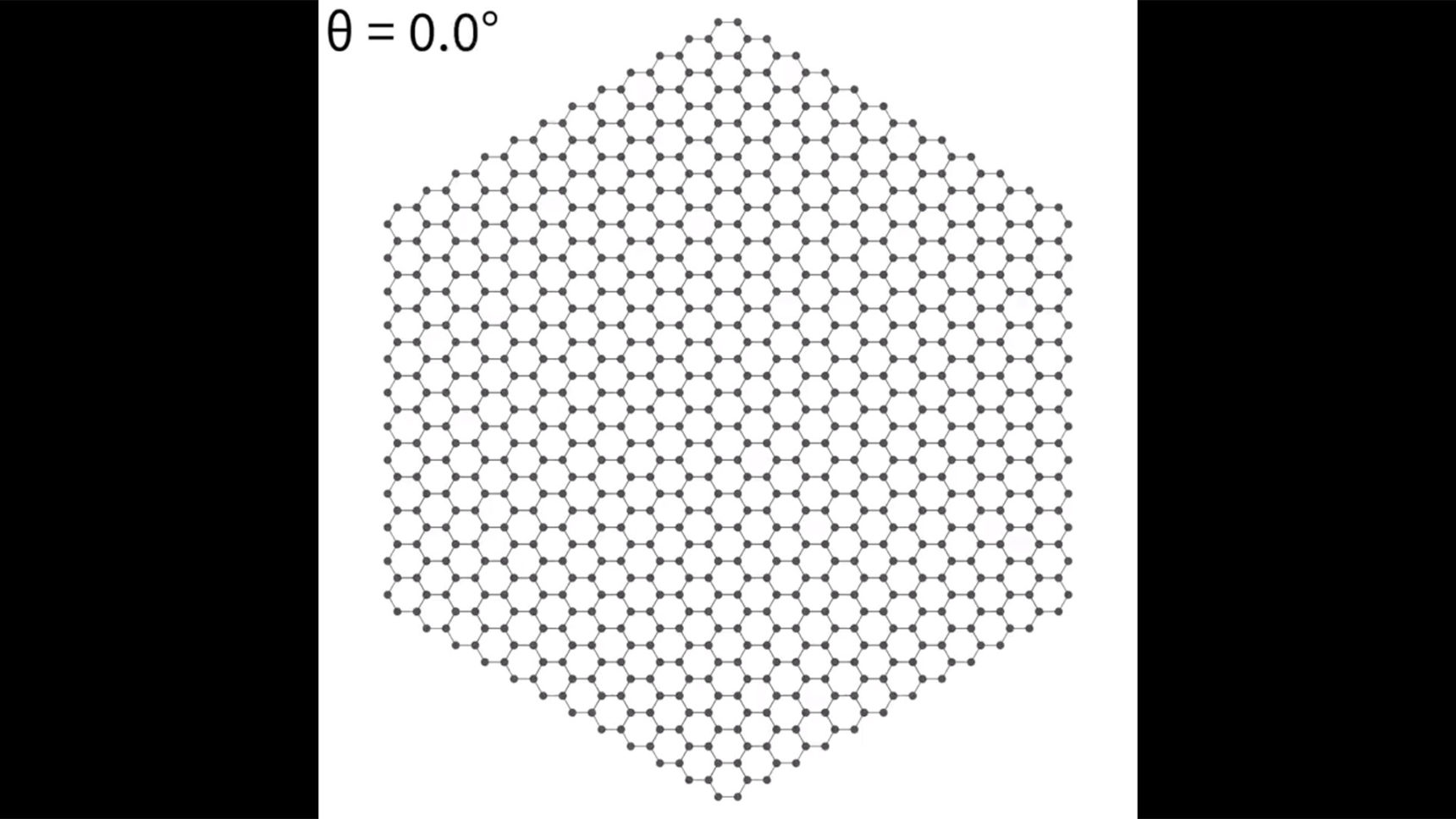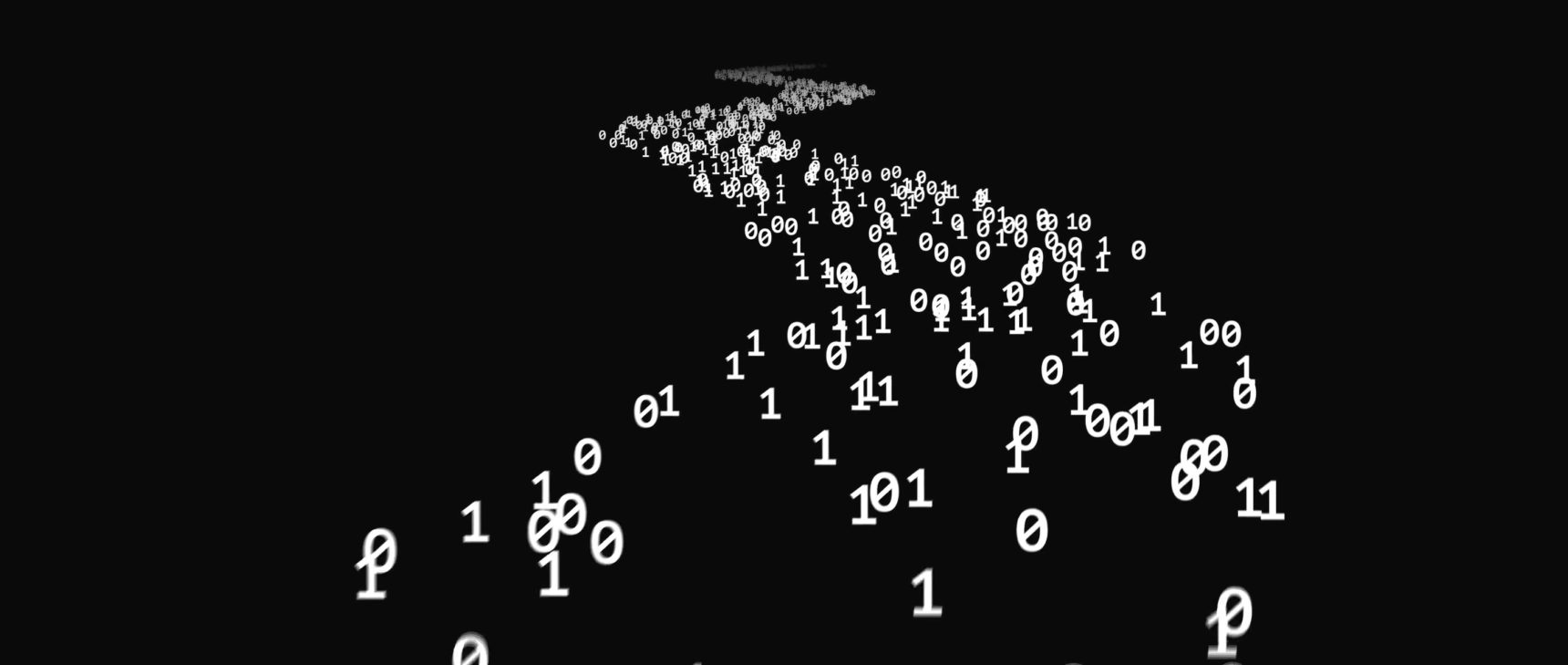When Magic Is Seen in Twisted Graphene, That’s a Moiré
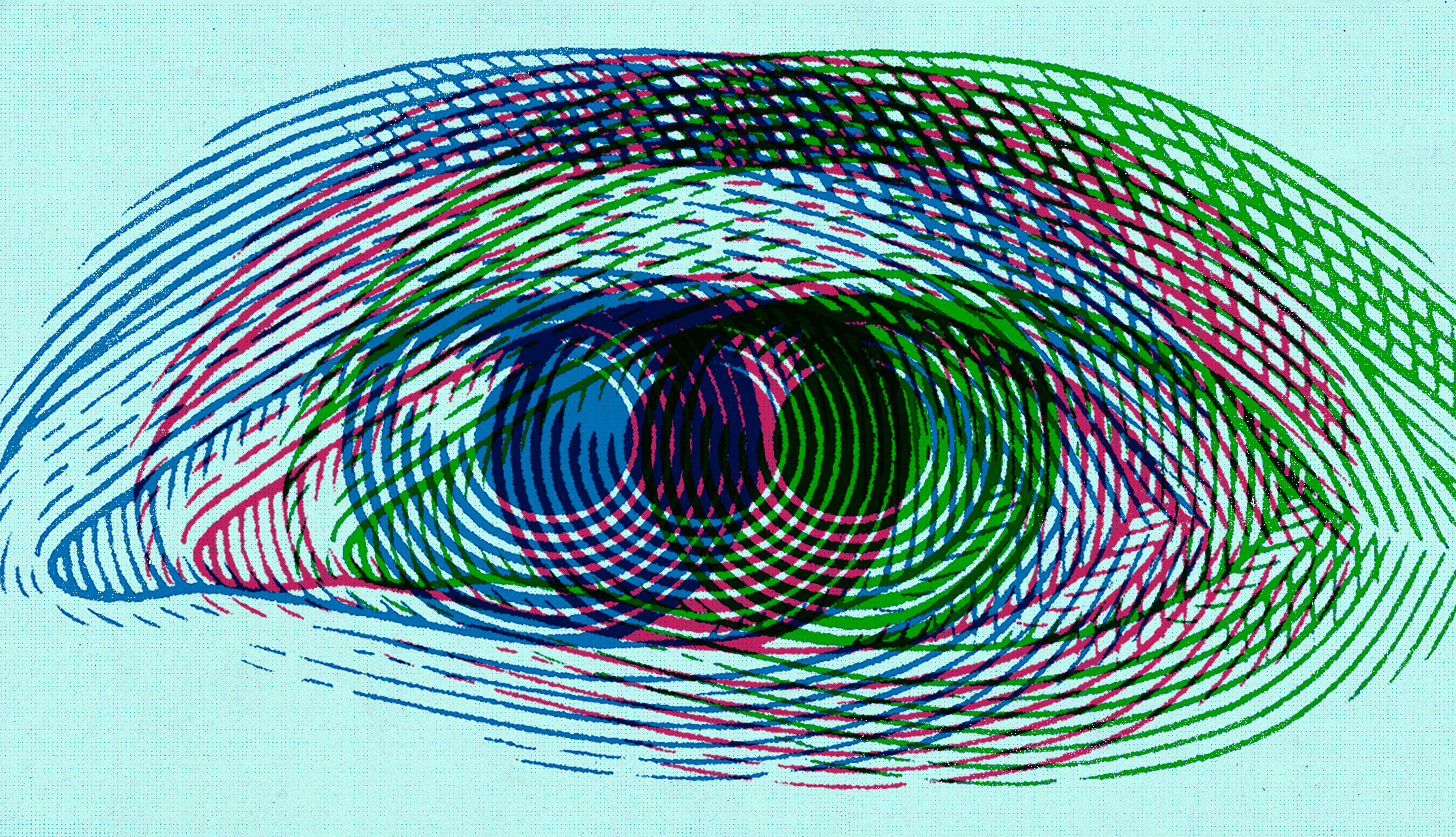
Dan Page for Quanta Magazine
Introduction
When two very similar grids with light and dark elements overlap, new sinuous patterns emerge that seem to shimmer and flow. Whether you’re into art or science, engineering or fashion, you have probably seen or at least heard of these moiré patterns. The name moiré (pronounced mwa-ray) is etymologically related to the French word for mohair and entered the language centuries ago, describing rippled or watered fabrics. Today, moiré patterns are seen not only in visual fields such as optics, art, photography and color printing, but also in seemingly far-flung areas like marine engineering and the detection of forged banknotes.
Recently, moiré effects have also entered the quantum realm in a big way, as David H. Freedman reported in his Quanta article “With a Simple Twist, a ‘Magic’ Material Is Now the Big Thing in Physics.” Freedman highlights a stunning discovery made by the experimental physicist Pablo Jarillo-Herrero and his colleagues at the Massachusetts Institute of Technology: When a layer of graphene, a sheet of carbon crystal with atoms arranged in a hexagonal one-atom-thick lattice, is dropped on another one and rotated to just the correct angle of about 1.1 degrees, the graphene magically acquires the ability to become superconductive when the requisite number of electrons are added. That interesting things would happen at around this magic angle had been mathematically predicted by the theorists Rafi Bistritzer and Allan H. MacDonald, both then at the University of Texas, Austin. In fact, Jarillo-Herrero’s team made their discovery while trying to create graphene twists that matched a bunch of magic rotation angles from this earlier prediction, including 1.05 degrees, 0.5 degrees and 0.24 degrees.
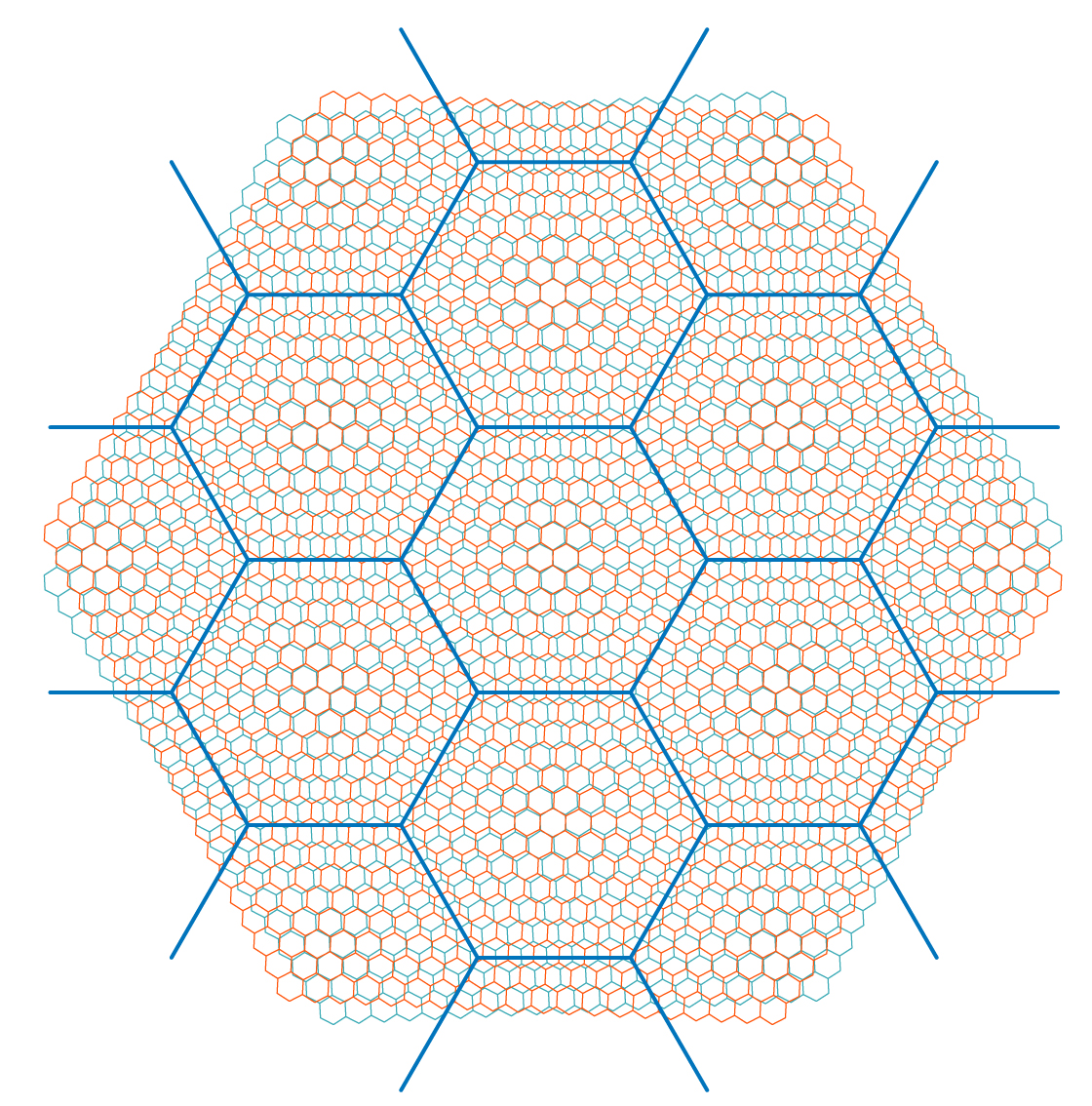
5W Infographics for Quanta Magazine
Why does rotated graphene exhibit this behavior? (Hint: It has something to do with moiré patterns.) The figure depicts what two layers of carbon atoms might look like when arranged in a hexagonal lattice. The second layer is slightly rotated, and the skewed overlap between the two creates a larger hexagonal moiré pattern (outlined in blue). This large hexagonal superlattice enables large numbers of electrons to interact, with interesting results, especially when the layers are rotated at specific angles at which, apparently, quantum tunneling can occur. The large moiré pattern of the superlattice is both visually striking and electrically special, as the emergence of superconductivity shows. Superconductivity is a state that exhibits quantum behavior macroscopically, allowing electric currents to circulate indefinitely without any resistance whatsoever. This concordance between the visual and the electrical in graphene almost seems to be an example of life imitating art right down to the quantum level. This discovery has sparked an explosion of interest in a new subfield of materials science, which has been dubbed “twistronics.”
The exact reason why specific angles produce the observed quantum effects is an active area of research in graphene twistronics. The answer depends on the details of atomic spacing and complex calculations of electron interaction and quantum tunneling; Freedman’s follow-up blog post “What’s the Magic Behind Graphene’s ‘Magic’ Angle?” offers an update on this subject. For this puzzle, we’ll focus on the geometry of how moiré visual effects arise and how factors such as the periods of and discrepancy between the two grids affect the size of the resulting moiré pattern.
Before we get to the puzzle questions, it’s worth noting that these patterns are inherently dynamic, and static pictures do not do them justice. Hence, the easiest and most enjoyable way to explore moiré patterns is to sit back and watch one of the many excellent moiré videos, such as this one, which gives us a feel for how patterns evolve and how surprises abound when we’re dealing with moiré effects:
Problem 1
Let’s start with the simplest example of how two similar patterns interfere with each other — the phenomenon of acoustic beats. In this case, the two interfering patterns are sound waves (mathematically, sine waves) of slightly different frequencies, which together produce the acoustically dominant recurring beat pattern at a frequency that is the difference between the two original frequencies.
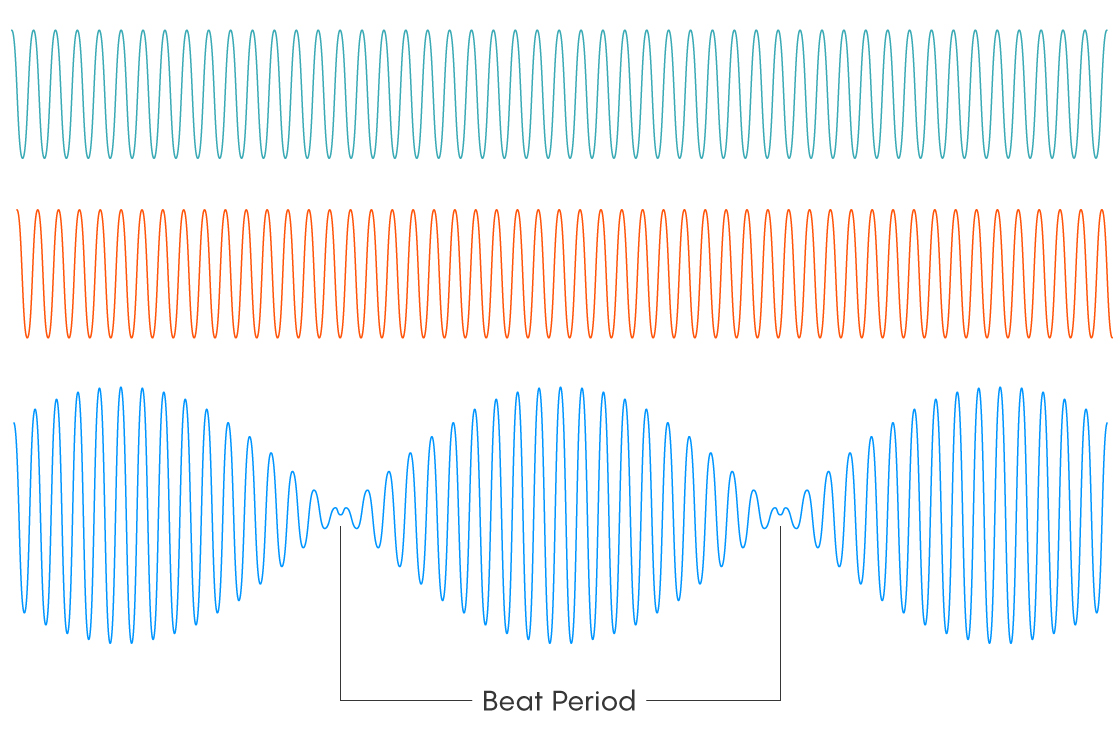
5W Infographics for Quanta Magazine
As you can see in the figure, the waxing and waning of the beats is caused by the fact that the original sine waves are in phase in the middle of the beat, which makes them reinforce each other, and out of phase between the beats, which makes them cancel each other out. Assuming that the original frequencies are centered around 500 hertz, try to fill in the following table.
| Beats/sec | Frequency 1 (Hz) | Frequency 2 (Hz) | Beat period (sec) | Oscillations per beat |
| 10 | 505 | 495 | 0.1 | 50 |
| 8 | ||||
| 6 | ||||
| 4 | ||||
| 2 |
Notice that as the differences between the frequencies diminish, the beats grow longer in duration.
This kind of sine wave interference is also seen in two-dimensional artistic patterns of the kind generated by spirographs. Here, for instance, is a figure generated by Quanta reader James M. in response to one of our first Insights puzzles, “How to Create Art With Mathematics.” In this pattern, the interference between sine waves of frequencies 104 (large loops) and 101 (small loops) generates a three-sided figure that visually highlights the beat phenomenon. Once again, it’s the small difference in frequencies that determines the characteristics of the larger pattern. (The actual parametric formula that generated the figure is cos(t) + cos(105t)/2 + sin(100t)/3, sin(t) + sin(105t)/2 + cos(100t)/3. If you’re wondering why the two numbers I mentioned are slightly different from these, check out the solution column for that puzzle.)
Problem 2
Now let’s move from beats to line moiré patterns. Here the waxing and waning of the beats is replaced by patterns of light and dark lines. Notice that the light and dark areas in the moiré pattern are much larger than the original dark and light lines, much like the acoustic beat durations and the large hexagons in the graphene.
Assume that the distance from the center of one dark line to the next in the square on the upper right is 10 units. What is the distance between the centers of the dark areas in the moiré pattern if the corresponding distance between lines in the lower left square is a) 12 units or b) 11 units?
Once again, a smaller difference between the interfering patterns produces a larger grain in the moiré pattern.
Problem 3
When we move to moiré patterns caused by rotation, the two overlapping patterns can be absolutely identical. The misalignment that was caused in the previous cases by a difference in frequency or distance now comes from the fact that one of the patterns is rotated. The approximate scale of the moiré pattern is inversely proportional to the angle of rotation. The smaller the angle, the larger the moiré pattern.
You can see this very clearly in this video, which shows the moiré patterns for overlapping graphene sheets rotated between 0 and 30 degrees:
Try stepping through the video manually or in slow motion to get a feel for how the pattern evolves and how the moiré hexagons shrink in size as the angle increases. Or you can step backward and see how the hexagons increase as the rotation angle decreases. Here are the images for rotations of 8.8 degrees, 4.4 degrees, 2.2 degrees and 1.1 degrees.

5W Infographics for Quanta Magazine
As you can see, at 8.8 degrees the moiré pattern that emerges has a central superlattice hexagon surrounded by six others of the same size, similar to the ones outlined in blue in the first figure above. Each of these moiré hexagons occupies about a quarter to a third of the entire hexagonal field in each direction. At 4.4 degrees, the central superlattice hexagon expands to about twice its previous size, covering about one-half to two-thirds of the entire field. At 2.2 degrees, the central superlattice hexagon covers the entire original bounding hexagon. When you halve the angle one more time to 1.1 degrees, the angle that produces the interesting effects in graphene, the superlattice seems to have disappeared completely and the pattern looks almost like a single sheet without any moiré. Or does it? What do you think has happened to the large moiré superlattice at this angle? What happens when you halve the angle again a few more times to match some of the even smaller angle predictions?
Problem 4
When you advance the angle in the rotation video above, you notice that moiré patterns change in a smooth and continuous manner. The superlattice hexagons get smaller and more numerous, and their size varies continuously with the angle. However, the electron tunneling phenomenon is discrete and recurs periodically at specific angles only. Can you venture an entirely geometric explanation of how the seemingly continuous rotation profile could possibly produce a discrete physical phenomenon that only recurs periodically? It might help to look at the Problem 1 scenario again. (After all, particles are waves too.)
That’s it for now. We’ve dissected the geometry of moiré patterns, but let’s not forget how beautiful and artistic they are. Now that we have explored some moiré science, let’s take a look at moiré art. I encourage readers to post links to their favorite moiré patterns and briefly describe why they like them.
While we’re at it, let’s also have a poetry challenge. Come up with your best couplets to explain the graphene story while parodying Dean Martin’s signature song “That’s Amore,” replacing those words, of course, with “That’s a Moiré.” Here’s one to start you off.
When two grids make fine art, and in science play a part, that’s a moiré!
Here’s wishing you a happy and creative fusion of art and science, and happy puzzling.
Editor’s note: The reader who submits the most interesting, creative or insightful solution (as judged by the columnist) in the comments section will receive a Quanta Magazine T-shirt or one of the two new Quanta books, Alice and Bob Meet the Wall of Fire or The Prime Number Conspiracy (winner’s choice). And if you’d like to suggest a favorite puzzle for a future Insights column, submit it as a comment below, clearly marked “NEW PUZZLE SUGGESTION.” (It will not appear online, so solutions to the puzzle above should be submitted separately.)
Note that we may hold comments for the first day or two to allow for independent contributions by readers.
Update: The solution has been published here.
